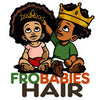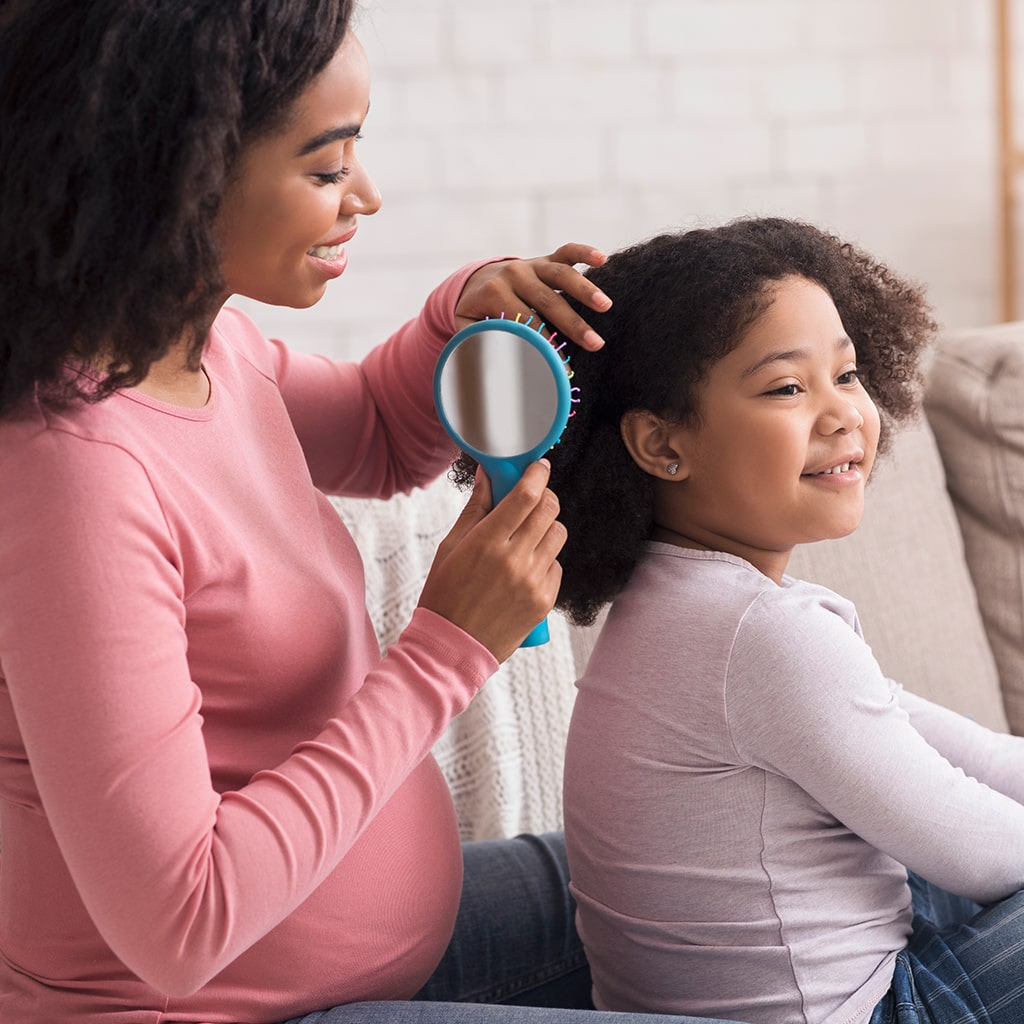It’s an exciting time where natural curls are being embraced and fewer curly kids and adults are straightening, relaxing, or adding straight weave or extensions to their hair. Even if you’ve mastered your child’s curly hair routine, you’ll need to gradually teach them how to care for their hair themselves. Here’s how to teach your child healthy hair care habits and how to love the hair they were born with.
Personalize Their Routine
Every child is unique, both because their hair and texture are different and because their schedule and activities differ from their siblings. For example, a child who is active in sports and physical activities may need to shampoo or co-wash more regularly. This means you need to personalize their routine to their lifestyle, as well as to their seasonal hair care needs.
From a young age, talk them through things such as their general shampoo schedule, why you wash their hair more frequently during baseball season, why you shampoo or co-wash their hair every time they go swimming, and how you change their routine in the summer and winter months. These casual conversations will set the foundation for keeping their natural curls healthy.
Celebrate Their Natural Hair
As the saying goes, “We always want what we don’t have.” Children and adults with straight hair want curly hair and often use wet-dry or hot curlers to curl their hair. So, your child may speak about wanting straight hair. This is natural, so hear them out and ensure you regularly celebrating their curls.
As young as preschool, this conversation can shift from a general desire to have straight hair to feeling as though your child’s curls, texture, or the natural volume of their hair make them feel like they don’t fit in. The tips below will help your child develop healthy self-love for their natural curls—and their entire body.
- Add these curly kids children’s books to your at-home library to celebrate their hair, beautiful brown skin, and body type.
- Purchase dolls and toys with characters that have hair that looks like theirs, or like other members of your curly-haired friends and family. Feel free to have a diverse mix, but ensure natural hair is represented.
- Watch diverse TV shows and point out the beauty of different textures of curly hair and types of curls—especially hair like their own.
- Point out kids and adults in your favorite magazines, or even people you see when out and about rocking their natural hair.
- Learn how to care for their hair texture but be mindful of how you speak about texture and curl patterns to avoid the “good hair” “better hair” stereotype.
- Let them get involved with selecting new hair products and accessories and head online together to decide what new hairstyles to try.
- Tell them how much you love their hair and as they begin styling it solo congratulate them on expressing their personality through different styles.
Talk About Damage
As you already know, curly hair requires more moisture than straight hair, so maintaining moisture will be a primary talking point. As your child begins doing their hair solo, they will want to experiment with new products, styling tools, and hair accessories. This includes products and styling tools they see on TV, social media, and even some of the products their friends use.
To help your children make healthy hair decisions, speak about damage early. This is as easy as explaining why you only use curly hair products, coconut oil, a curly hair comb, and specific hair accessories. If you use a diffuser or heated styling tools, talk through how you protect their hair before use, frequency of use, and why you never use certain products and styling tools.
When your hair, their hair, or a sibling’s hair shows signs of damage—use it as an example of how to identify the damage early on and how to repair their hair.
Help Them Pack Their Hair Essentials For Sleepovers
Whether they’re heading to auntie’s, grandma’s, a birthday sleepover, or their best friend’s house—help them pack, and make it fun. Maybe select a fun new sleep bonnet or scarf and invest in a toiletry bag to put their bathroom and hair care items in.
If they are staying at someone’s home who doesn’t have curly or natural hair, chat with the parent who takes care of the household hair routine to share what your child does and doesn’t need help with. Even sleeping in a bonnet or scarf can become an uncomfortable talking point for your child if they are staying somewhere new for the first time. Be proactive so that their friend and their family understand that your child’s hair is different.
Slowly Transition To Solo Hair Care And Styling
As your child becomes more independent gradually guide them in how to take over their hair care routine. Practice makes perfect, so this might mean letting them braid or twist their ponytail, then cleaning it up after they do it themselves. If they express interest, allow them to style your hair or help style their sibling’s hair—even if it’s just for fun in the evenings or on the weekends.
Set reminders on your phone to remind them when to shampoo their hair or perform other seasonal and proactive hair care treatments. If styling their hair is a time you bond together solo or as a family, continue to style their hair a few days a week.
Lead By Example
If you have natural hair too, pay attention to how you speak about your hair, how you take care of your hair, and if you are celebrating your hair in the same way you expect your children to. This gets a bit tricky if you are encouraging their natural hair but don’t embrace your natural hair. Just be mindful of the messages your sending, as well as how your friends and family with natural hair speak. For example, you may need to set boundaries with family members who pressure you or your child to relax, straighten, or make their hair look “smaller”. Big hair is beautiful!
If you’re searching for moisture-rich, sulfate-free curly kids products to teach your child healthy hair care habits we invite you to browse the Fro Babies Hair Collection.







Hi Lisa! Thanks for reaching out to us! For extreme dryness on hair, we recommend using the Easy Herbal Comb Out Kinky, Wavy Natural for Kids on naturalhair.org. If she has eczema on her scalp, use the Hair & Scalp Oil with Vitamin E. It has a nozzle tip which makes for easy application. She’ll love how it smells and you’ll love how it coats her scalp for maximum moisturizing!
Hello my 3 yr old daughter has eczema. I’ve been using aveno and natural oils but nothing is helping . She has a steroid too that I put in her hair . Her hair is really dry and soaks up all moisture. I need some recommendations. I was wondering what to try on your product line ?
Leave a comment